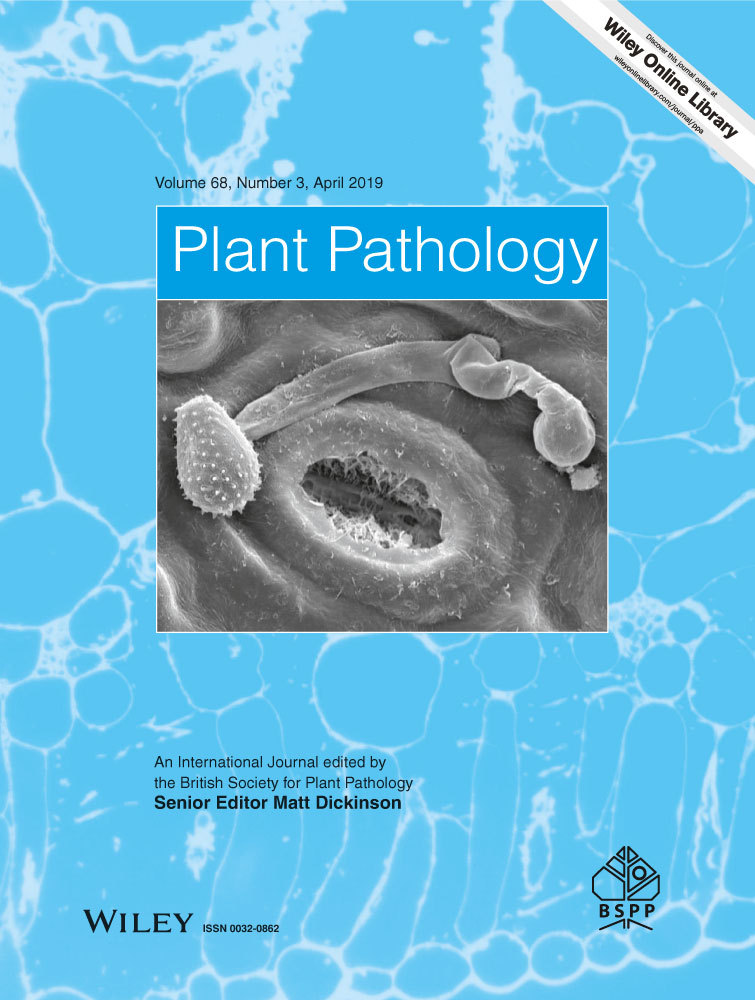Ver ítem
- xmlui.general.dspace_homeCentros e Institutos de InvestigaciónCIAP. Centro de Investigaciones AgropecuariasInstituto de Patología VegetalArtículos científicosxmlui.ArtifactBrowser.ItemViewer.trail
- Inicio
- Centros e Institutos de Investigación
- CIAP. Centro de Investigaciones Agropecuarias
- Instituto de Patología Vegetal
- Artículos científicos
- Ver ítem
Transcriptome analysis of mycorrhizal and nonmycorrhizal soybean plantlets upon infection with Fusarium virguliforme, one causal agent of sudden death syndrome
Resumen
Soilborne pathogens represent a threat to agriculture causing important yield losses. Sudden death syndrome (SDS) of soybean is a severe disease caused by a complex of Fusarium species. This pathosystem has been widely investigated and several strategies have been proposed to manage SDS. Although a decrease in symptoms and in the level of root tissue infection, particularly by F. virguliforme, was observed in the presence of arbuscular mycorrhizal fungi
[ver mas...]
Soilborne pathogens represent a threat to agriculture causing important yield losses. Sudden death syndrome (SDS) of soybean is a severe disease caused by a complex of Fusarium species. This pathosystem has been widely investigated and several strategies have been proposed to manage SDS. Although a decrease in symptoms and in the level of root tissue infection, particularly by F. virguliforme, was observed in the presence of arbuscular mycorrhizal fungi (AMF), biological control based on AMF has received less attention. Here, the results are reported of transcriptional analysis of mycorrhizal versus nonmycorrhizal soybean plantlets infected by F. virguliforme, grown under strict in vitro culture
experimental conditions. Important transcriptional reprogramming was detected following infection by the pathogen. Results revealed 1768 and 967 differentially expressed genes in the AMF-colonized (+AMF+Fv) and noncolonized ( AMF+Fv) plants, respectively. Major transcriptional changes corresponded to defence response-related genes belonging to secondary metabolism, stress and signalling categories. The +AMF+Fv treatment showed the largest number of
up-regulated genes related to defence, such as those encoding disease resistance proteins, WRKY transcription factors, auxins, receptors kinases and proteases. Only a few genes had primed expression in the +AMF+Fv treatment, such as those encoding a thaumatin-like protein (TLP) and a pleiotropic drug resistance (PDR) protein. Moreover, +AMF+Fv showed a significantly greater number of down-regulated genes related to cell wall modification and peroxidases than the –AMF+Fv treatment. This detailed investigation increases knowledge of transcriptional changes and potential metabolic pathways involved in the enhanced resistance or tolerance of mycorrhizal plants to infection by F. virguliforme.
[Cerrar]

Autor
Marquez, Nathalie;
Giachero, María Lorena;
Gallou, Adrien;
Debat, Humberto Julio;
Declerck, Stéphane;
Ducasse, Daniel Adrian;
Fuente
Plant Pathology 68 (3) : 470- 480 (2019)
Fecha
2018-11-21
ISSN
0032-0862
1365-3059 (online)
1365-3059 (online)
Formato
pdf
Tipo de documento
artículo
Palabras Claves
Derechos de acceso
Restringido
 Excepto donde se diga explicitamente, este item se publica bajo la siguiente descripción: Creative Commons Attribution-NonCommercial-ShareAlike 2.5 Unported (CC BY-NC-SA 2.5)
Excepto donde se diga explicitamente, este item se publica bajo la siguiente descripción: Creative Commons Attribution-NonCommercial-ShareAlike 2.5 Unported (CC BY-NC-SA 2.5)

